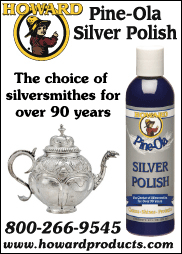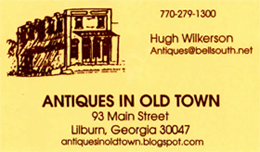|
When Was
- Soda Pop Invented and Who Invented It?
| By Mike McLeod
|
 |
Bottle Photo: C. Alfs Charleston cobalt-colored soda
bottle, rare pyramid style, $9,600.
(Photo, courtesy Reggie Lynch, www.antiquebottles.com) If you answered Dr. John Pemberton, Caleb Bradham, Charles Alderton or
Charles Hires sorry. While these pharmacists did invent Coca-Cola (1886),
Pepsi (1893) Dr Pepper (1885), and Hires Root Beer (1866), the prize for
creating carbonated water goes to Joseph Priestley.
Born in Leeds, England,
Priestley became interested in science after meeting Benjamin Franklin in 1766.
Priestley was the pastor of a small break-away church at the time, and one day,
he noticed the smell coming from a brewery next door. He reproduced the gas in
an experiment (later recognized as carbon dioxide) and dissolved it in water,
noting its pleasant taste. For this discovery, Priestley was inducted into the
French Academy of Sciences in 1772.

|
|

|
|

|

Contact
us to
place your antique
shop
or antique
related
information
here.
|
|
|
|
|

|
|
A few years later, a Swedish chemist
named Torbern Bergman invented a machine that created carbonated water from
chalk and sulfuric acid. Yum.
Perhaps the first unintentional carbonated soft drink was created at the direction of Dr. Philip Syng Physick, also known
as the father of American surgery. In 1807, he ordered the preparation of a carbonated drink for a patient that had
flavoring added to enhance the taste. No other mention is made of Dr. Physick in the history of soda.
In the U.S., it took a while for all the elements to combine for the beginning of soda pop and the eventual cola wars:
1819: Samuel Fahnestock patents the first soda fountain.
1832: John
Matthews creates a machine for manufacturing carbonated water and sells it to
soda fountain owners.
1892: William Painter invents the crown bottle
cap.
1899: The first glass-blowing machine is patented by Michael Owens,
making glass bottles available for soda pop.
A wide variety of other pharmacists and inventors created many other
carbonated beverages throughout the 19th and 20th centuries. C. Alf, a
Charleston, S.C., druggist, may have been the first soda bottler in America.
Reports Reggie Lynch of the Southeast Bottle Club, "He learned his technique
from Paris druggists who were pioneers in carbonated beverage bottling. The
first type of bottle was the pyramid shape which had a defect in design with the
neck being too thin. This defect, along with the fact that he was only a bottler
for one and a half years, has made the pyramid the rarest of the colored sodas."
Lynch sold the C. Alfs bottle pictured here for $9,600 a few years ago.
Today, soda pop is a multi-billion dollar industry. (Coke had revenues in
the neighborhood of $23 billion last year, which is a nice neighborhood to be
in). In addition, it has spawned perhaps the widest variety of collectibles and
collectors on earth.
But whatever became of the "Father of Soda Pop"? Joseph
Priestley made many more discoveries during his lifetime, including ammonia,
sulfur dioxide, nitrous oxide (laughing gas, which would be used in later years
as the first anesthesia), and rubber pencil erasers.
Despite the acclaim he
received for his scientific discoveries, his religious and political beliefs and
writings such as his History of Corruptions of Christianity, which was burned
1785 ultimately resulted in his home and his church being burned down in 1791.
He and his family eventually moved to America in 1794 where he was warmly
received by the scientific community. He lived a quiet life committing his
thoughts to paper until the day he died in 1804.
Posted Oct. 2006
|